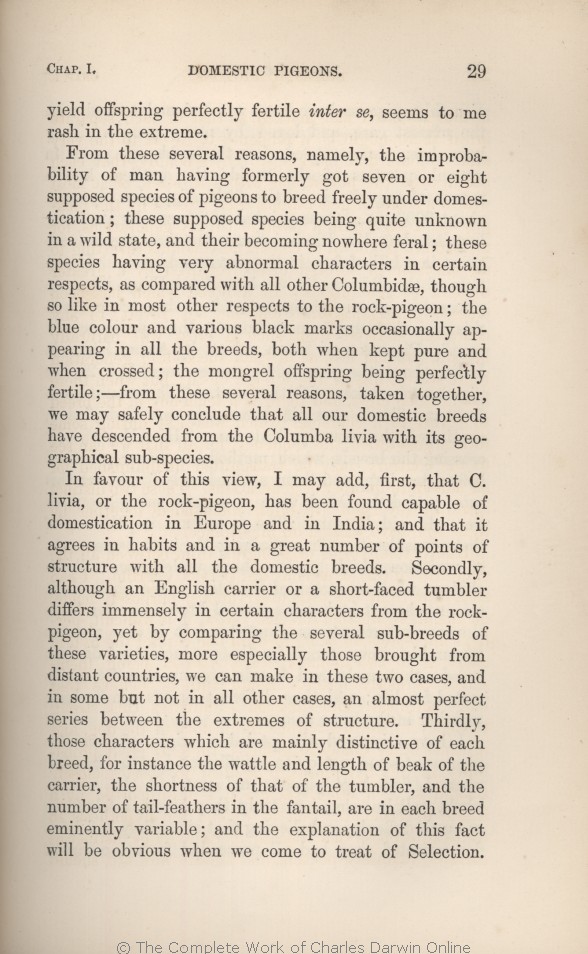From these several reasons, namely,
the | the 1859 1860 1861 1866 1869 | | — the 1872 |
| got 1859 1860 1861 1866 1869 | | made 1872 |
| these 1859 1860 1861 1866 1869 | | — these 1872 |
| becoming 1859 1860 1861 1866 1869 |
| not having become 1872 |
| nowhere 1859 1860 1861 1866 1869 | | anywhere 1872 |
| these species having 1859 1860 1861 1866 1869 |
| — these species presenting certain 1872 |
| characters 1859 1860 1861 1866 1869 | | characters, 1872 |
| in certain respects, 1859 1860 1861 1866 1869 |
| OMIT 1872 |
| in most other respects to 1859 1860 1861 1866 1869 |
| OMIT 1872 |
| rock-pigeon; 1859 1860 1861 1866 1869 | | rock-pigeon 1872 |
| the 1859 1860 1861 1866 1869 |
| in most respects; — the occasional re-appearance of the 1872 |
| black marks occasionally appearing 1861 1866 1869 |
| marks occasionally appearing 1859 1860 |
| black marks 1872 |
| the 1859 1860 1861 1866 1869 |
| — and lastly, the 1872 |
| we may safely conclude 1861 1866 1869 1872 |
| I can feel no doubt 1859 1860 |
| have 1859 1860 1861 1866 1869 | | are 1872 |
| Columba 1859 1860 1861 1866 1869 |
| rock-pigeon or Columba 1872 |
|
In favour of this view, I may add,
first, | first, 1869 | | firstly, 1859 1860 1861 1866 1872 |
| C. livia, or the rock-pigeon, 1859 1860 1861 1866 1869 |
| the wild C. livia 1872 |
| although 1859 1860 1861 1866 1869 | | that, although 1872 |
| a short-faced 1866 1869 1872 | | short-faced 1859 1860 1861 |
| by 1859 1860 1861 1866 1869 | | that, by 1872 |
| varieties, 1860 1861 1866 1869 | | breeds, 1859 | | two races, 1872 |
| make 1859 1860 1861 1866 1869 | | make, 1872 |
| in these two cases, and in some but not in all other cases, an almost perfect series 1866 1869 |
| an almost perfect series 1859 1860 1861 |
| OMIT 1872 |
| the 1859 1860 1861 1866 1869 | | them 1872 |
| extremes of structure. 1859 1860 1861 1866 1869 |
| and the rock pigeon, an almost perfect series; so we can in some other cases, but not with all the breeds. 1872 |
| breed, 1859 1860 1861 1866 1869 | | breed 1872 |
| for 1859 1860 1861 1866 1869 |
| are in each eminently variable, for 1872 |
| fantail, 1859 1860 1861 1866 1869 | | fantail; 1872 |
| are in each breed eminently variable; 1859 1860 1861 1866 1869 |
| OMIT 1872 |
| come to 1859 1860 1861 1866 1869 | come to 1872 |
| Selection. 1861 1866 1869 1872 | | selection. 1859 1860 |
|









